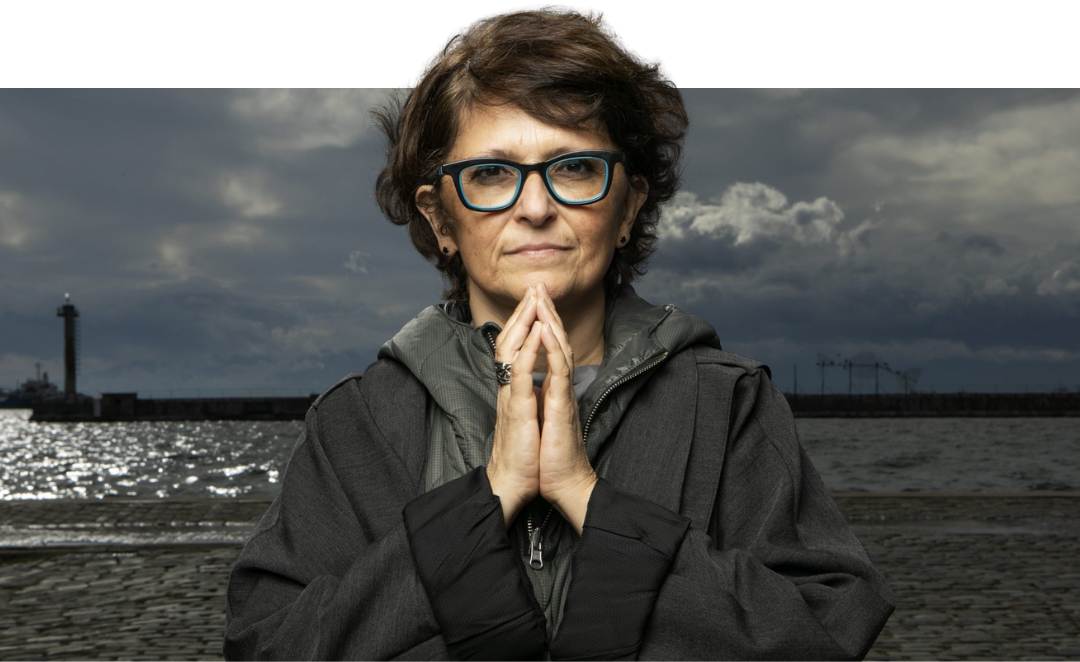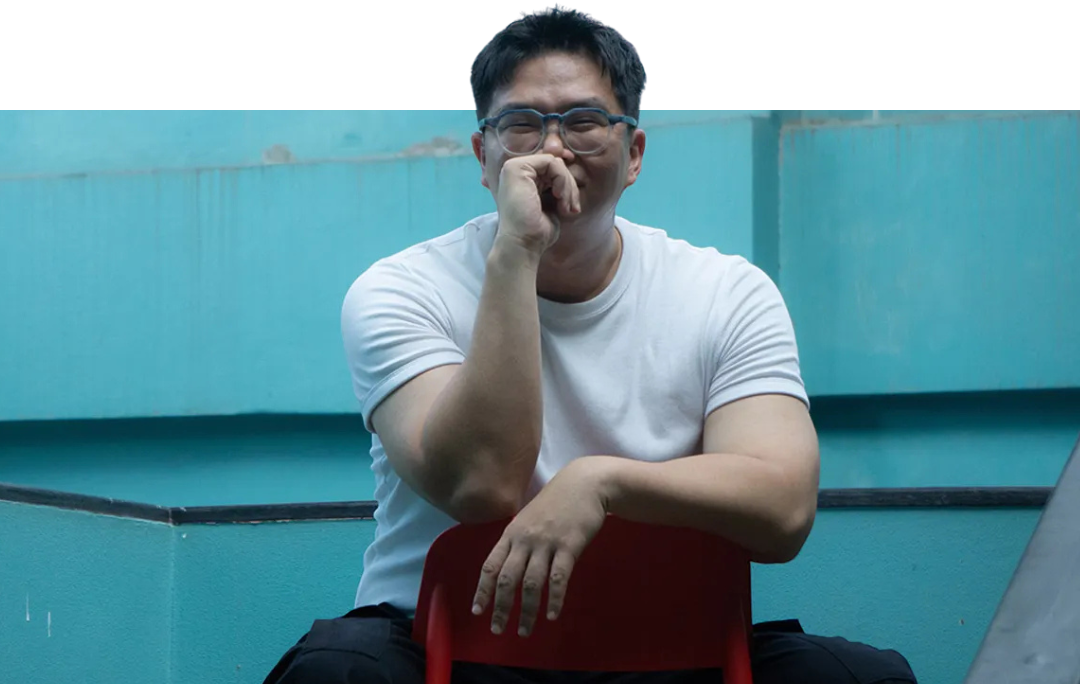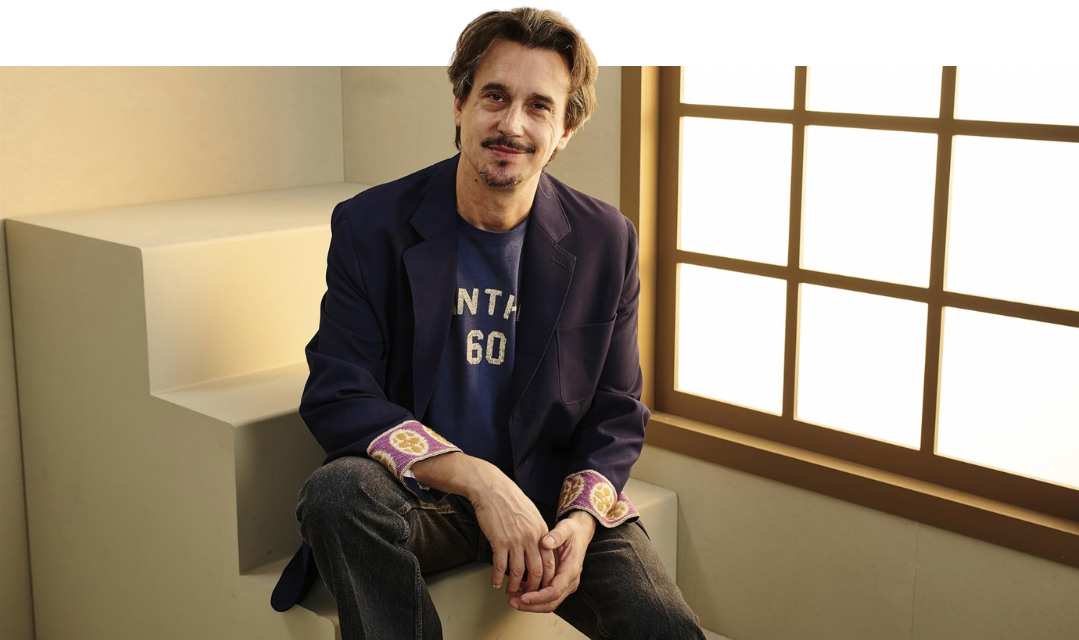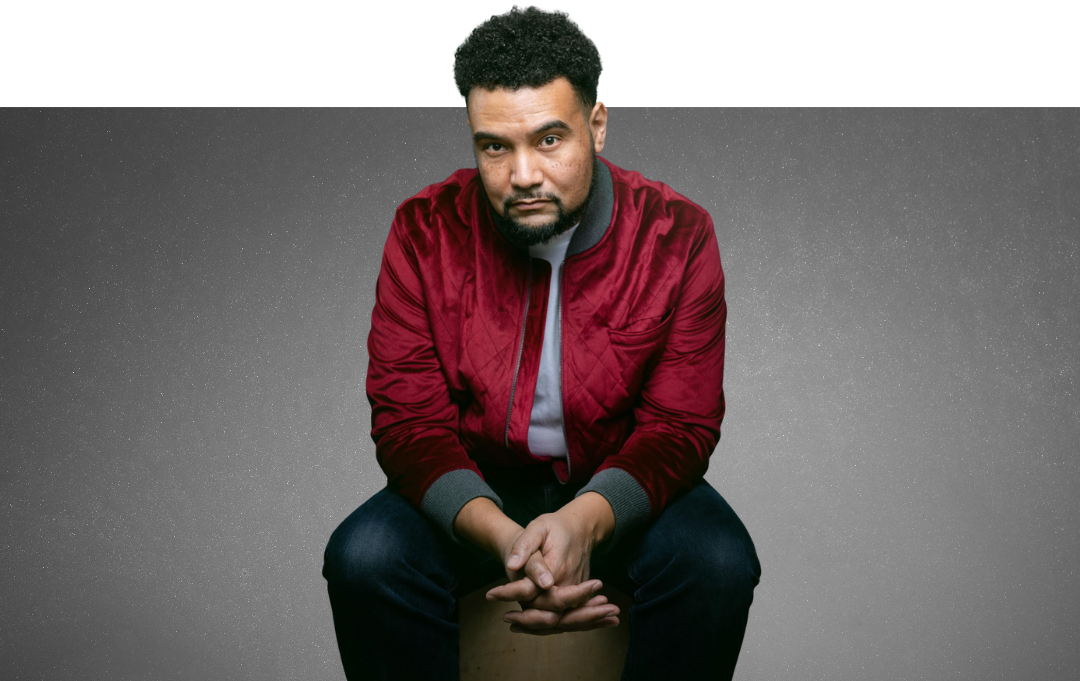Meet the Filmmakers of the 2025 Chicago International Film Festival
Assorted Flavors features listicles and other movie-related goodies.
The 61st Chicago International Film Festival featured a wide variety of filmmakers from around the world, including both big names and exciting newcomers. (See our full coverage.)
We wanted to get to know this year’s filmmakers a little better, so we asked them to do this brief Q&A about what they learned making their movie, their filmmaking superpower, and more. Enjoy!
Sepideh Farsi
Put Your Soul on Your Hand and Walk
1. What’s the elevator pitch for your movie? I don’t have an elevator pitch for any of my movies, but I would just say that this film is my response as a filmmaker and as a human being to a situation that has become unbearable to me. And I needed to find a response for the absence of the Palestinian voices in the media after the October 7 attacks happened and what unfolded became a genocidal campaign in Gaza.
2. What’s one thing you learned making this movie? How to keep hope from Fatma and how to be resilient with her and like her.
3. What’s your filmmaking superpower? To be able to make films as I can with almost nothing sometimes.
4. Who’s your filmmaking hero? I don’t have a filmmaking hero, my heroes are people who I love and who I film.
5. Fill in the blank: The state of independent cinema is… going from art to industry to business. It needs to come back to what it was in the beginning: art.
Alexander Phillips
Anything That Moves
1. What’s the elevator pitch for your movie? Shot on Super 16mm, Anything That Moves is an erotic thriller following Liam, an unassuming bike-courier and sex worker in Chicago delivering whatever will satisfy his clients’ appetites—until they start turning up dead.
2. What’s one thing you learned making this movie? That it’s your duty as a filmmaker to do whatever you want.
3. What’s your filmmaking superpower? I create a space for people to do freaky shit.
4. Who’s your filmmaking hero? Andrzej Zulawski.
5. Fill in the blank: The state of cinema is… packed with corporate sludge and false arthouse prophets. Find and watch the good stuff and do the best you can.
Yûta Shimotsu
New Group
1. What’s the elevator pitch for your movie? A battle between a human pyramid and a girl.
2. What’s one thing you learned making this movie? Low budget inspires creativity.
3. What’s your filmmaking superpower? Creating strange visuals and directing with a sense of the uncanny.
4. Who’s your filmmaking hero? My father—he’s always watching over me.
5. Fill in the blank: The state of cinema is… a mirror reflecting society.
Carolina Cavalli
The Kidnapping of Arabella
1. What’s the elevator pitch for your movie? A little girl wants to run from home and finds a young woman who owns a car. The young woman thinks she has just met herself as a child but is totally unaware of the child’s plan and identity.
2. What’s one thing you learned making this movie? I’m not sure yet, but something related to emotions and showing emotions.
3. What’s your filmmaking superpower? I always predict when it’s going to rain.
4. Who’s your filmmaking hero? My best friend Babak Jalali.
5. Fill in the blank: The state of cinema is: getting so much better!!!
Ratchapoom Boonbunchachoke
A Useful Ghost
1. What’s the elevator pitch for your movie? A female ghost returns to her human husband by possessing a vacuum cleaner at their house.
2. What’s one thing you learned making this movie? Patience.
3. What’s your filmmaking superpower? Humor.
4. Who’s your filmmaking hero? Jacques Rivette, Marco Ferreri, Werner Schroeter, Otar Iosseliani, Chantal Akerman, Hou Hsiao-hsien, Manoel de Oliveira, Nagisa Oshima, Joao Cesar Monteiro.
5. Fill in the blank: The state of cinema is… dreaming with eyes open.
Louise Hémon
The Girl in the Snow
1. What’s the elevator pitch for your movie? On a stormy night of 1899, a young schoolteacher arrives in a snowbound hamlet deep into the French Alps. Despite the cold mistrust of the inhabitants, she is determined to shed light on some of their old beliefs. As she blends into the life of the community, a sensual vertigo grows within her.
2. What’s one thing you learned making this movie? In the movie an old woman says “If you lock the story, it will die.” And I discovered in the making that she is so very right: if you are stuck to your first idea, it’s dead. You must welcome the unexpected and always reinvent the scenes.
3. What’s your filmmaking superpower? Singing every morning in the shower before going on my snowy set. “Ain’t No Mountain High Enough” gave me some sort of super strength.
4. Who’s your filmmaking hero? I have so many! But my American filmmaking hero is Kelly Reichardt. Meek’s Cutoff is an absolute masterpiece I rewatched on repeat before shooting The Girl in the Snow.
5. Fill in the blank: The state of cinema is… in a perpetual revolution.
Hadrah Daeng Ratu
The Book of Sijjin & Illiyin
1. What’s the elevator pitch for your movie? The Book of Sijjin & Illiyin is a horror film about pain, revenge, and rebellion—when the oppressed finally fight back against those who control their lives.
2. What’s one thing you learned making this movie? I learned that horror isn’t just about fear—it’s about emotion. The real terror often comes from pain, guilt, and the things we try to hide.
3. What’s your filmmaking superpower? Empathy. I can see both light and darkness in people, and that helps me tell honest stories, even in horror. And also my imagination: I can envision worlds and characters that feel alive, bring them to life on screen and translating my imagination into audiovisual language. That’s what makes me love creating horror films.
4. Who’s your filmmaking hero? I watch films from all over the world and learn from every interesting work rather than following just one director.
5. Fill in the blank: The state of cinema is… Film is not just about stories or characters. Today, cinema reflects the state of the world, can symbolize hope, and even act as a catalyst for change.
Damiano Michieletto
Primavera
1. What’s the elevator pitch for your movie? An orphan girl discovers her musical talent through an encounter with Antonio Vivaldi. How far will she risk to realize her dream of becoming a musician?
2. What’s one thing you learned making this movie? It’s always better to evoke something rather than wanting to explain it.
3. What’s your filmmaking superpower? I think I’m good at telling stories by using music as a powerful narrative tool.
4. Who’s your filmmaking hero? I like a lot the style of Alejandro González Iñárritu.
5. Fill in the blank: The state of cinema is... in our hands. By using our imagination, we can always find emotions worth sharing. This is the industry of imagination.
Kevin Shaw
One Golden Summer
1. What’s the elevator pitch for your movie? In 2014, Chicago’s Jackie Robinson West Little League baseball team won the nation’s heart—then lost their Little League World Series U.S. title in controversy. Now grown, the players share a story of pride, betrayal, and resilience that reveals how race and media perception shaped their journey.
2. What’s one thing you learned making this movie? Resilience exists in all of us. No matter how tough life can get, we all have the power to overcome what life can throw at us. The kids who competed for Jackie Robinson West had to endure social stigma and bullying due to the failure of adults, not of their own making. They got an early lesson on how harsh society can be, but grew stronger from the experience, recognizing the bond built between each other as teammates had grown into a brotherhood that will never be broken.
3. What’s your filmmaking superpower? Listening. It’s a key and necessary trait if you want to be a filmmaker in general. This is a people-person business. No one wants to work with an asshole, nor be around them very long in conversation. So in order to put the best representation of yourself forward and to have great conversations with the people who are participating in your film, you’ve got to be focused on what they’re saying. By listening, you can offer up informed follow-ups and more thoughtful questions that can lead to a revealing dialogue that feels less like an interview and more like an intimate conversation.
4. Who’s your filmmaking hero? I can’t pinpoint one person as my filmmaking hero. I have several artists who inspire my work, whether that be a Steve James, Ryan Coogler, Christopher Nolan, Spike Lee, Barry Jenkins, Ava DuVernay, James Baldwin, Colson Whitehead, Percival Everett — the list is already getting too long to manage! I wouldn’t be here if it wasn’t for my late father. My father Jim Shaw was an engineer at the local television station WFLD-TV Channel 32 in Chicago for the majority of his life; 40-plus years. He would take me to his work when I was a little kid, where I got to see “how the sausage was made” to say the least. I watched studio news shows and variety entertainment like Son of Svengoolie in action from behind the scenes and in the control room. The impression those trips left on me were massive. I wanted to work in media in some fashion, but I wasn’t sure where. My father told me, whatever you do, learn how to write, it will help build your storytelling skills, because telling stories are how we exist in the world. That piece of advice led me to pursue a journalism degree, which eventually led to me being a documentary filmmaker. If I didn’t heed that advice, who knows where I would be today.
5. Fill in the blank: The state of cinema is... in flux. They say people don’t go to the theaters anymore but don’t tell that to folks who are coming out in droves at film festivals. The search for funding has become ever more challenging, especially in the documentary space where public media is under full-throttle attack. The question of “Whose stories should be told?” has now been replaced with the inquiry of “Whose stories can be told?” based on the lack of funding, censorship and the like. A reimagining of what film creation can be is underway, challenging all of our pre-conceived notions of how to create and distribute this art form we love. The obstacles right now might be massive and the ways to overcome them might be incredibly challenging, but our desire to tell stories will never die.
Lorraine Jones Molina & Cristian Carretero
Esta Isla
1. What’s the elevator pitch for your movie? Set in the lush but fractured landscapes of Puerto Rico, Esta Isla follows two teenagers on the run after a violent incident forces them to flee across the island. Blending realism and poetry, the film becomes both a love story and a social portrait — a journey through a country haunted by inequality, colonialism, and dreams of escape. With non-professional actors and an intimate style, Esta Isla captures a raw, contemporary Puerto Rico rarely seen on screen, where tenderness and resistance coexist in the shadow of paradise.
2. What’s one thing you learned making this movie? We learned how to work with very few resources and still create something meaningful — how to make a lot with little. The process taught us the power of involving the community, trusting collaboration, and staying honest to the people and stories we’re portraying.
3. What’s your filmmaking superpower? X-ray vision — the ability to see through the facade of reality and capture the vitality of the moment, to find beauty in what might otherwise be overlooked.
4. Who’s your filmmaking hero? This is a difficult one since we admire many filmmakers from different backgrounds and cultures, but we’d choose Agnès Varda. She was a woman who broke new ground and continues to inspire us to make films that challenge conventions and break the mold.
5. Fill in the blank: The state of cinema is… in need of new modes of distribution and exhibition that include independent films from around the world. We need more art-house and community cinemas that bring films reflecting audiences’ realities and empowering them. In many Latin American countries, we mainly receive Hollywood films exhibited in large theater chains—films that often don’t reflect our realities or social ideals. This change is needed for both audiences and filmmakers. We must use film, no matter the genre or style, as a tool for reflection and healing.











